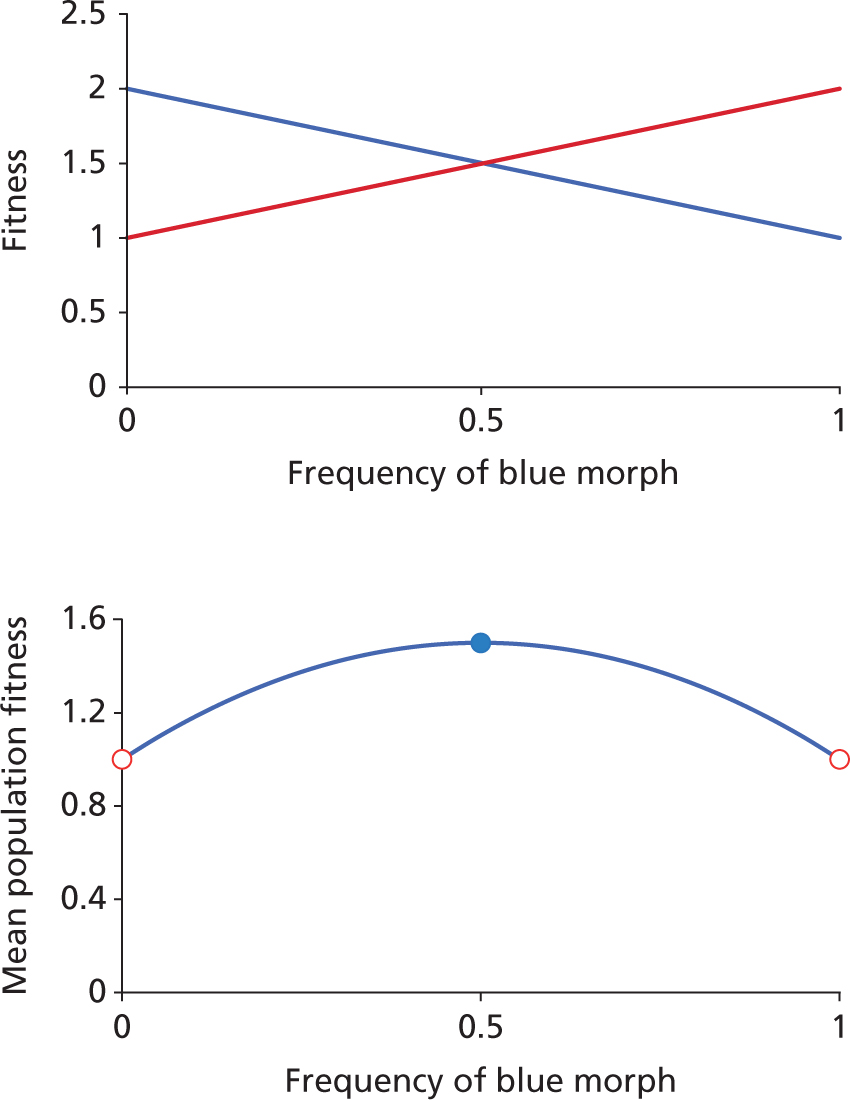
Negative Frequency-Dependent
Selection
An orchid species occurs in two
color forms (morphs), red and
blue. Neither
morph provides any nectar to the pollinator: pollinator
insect species quickly learn to avoid the
more common morph, but have less opportunity to learn about
the less common morph. Therefore, either morph has lower
fitness when common (e.g., Wblue  2
as f(blue)
2
as f(blue)  1
and Wred
1
and Wred  1
as f(red)
1
as f(red)  1) [top]. [Bottom] Minimal population
fitness occurs when both morphs are at intermediate
frequency. This equilibrium is unstable:
deviation to either side will lead to fixation of one morph
or the other. Negative frequency-dependent selection de-stabilizes
population polymorphism. Compare dynamics
with Positive Frequency-Dependent
selection.
1) [top]. [Bottom] Minimal population
fitness occurs when both morphs are at intermediate
frequency. This equilibrium is unstable:
deviation to either side will lead to fixation of one morph
or the other. Negative frequency-dependent selection de-stabilizes
population polymorphism. Compare dynamics
with Positive Frequency-Dependent
selection.
[note to self: curves are backwards, swap 4.11
& 4.12 ?]